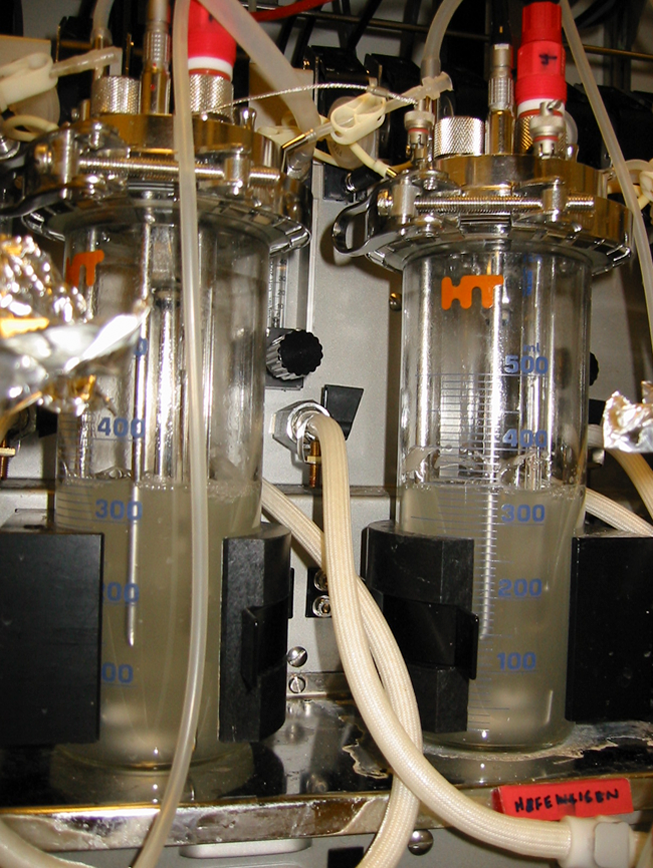New & Noteworthy
Too Big for the Oven
March 23, 2017

Just like baking bread, “oven” size matters when trying to increase yields of fatty acids in yeast.
In a classic skit from I Love Lucy, Lucy bakes a loaf of bread that is so big it ends up coming out of the oven, pushing her against the far wall. Definitely one of the funniest moments from early TV.
In a new study in Nature Communications, Gajewski and coworkers show that the yeast enzyme fatty acid synthase (FAS) complex, is a bit less comical when it comes to the fatty acid chains it makes. When these authors engineer the enzyme complex to “shrink” the oven, the “bread” it makes becomes smaller. A more constrained active site that holds onto its growing fatty acids less tightly makes shorter-chained fatty acids.
This is an important finding because these shorter-chained fatty acids are so useful as precursors for products like biofuels. Engineered yeast like these may, among other things, one day help us get to a carbon neutral future.
Gajewski and coworkers were able to pull this off because the 3-D structure of this enzyme complex is so well understood. They engineered changes that would be predicted to restrict the growth of the fatty acid chain.
For example, a key player in the elongation step happens in the condensation domain (KD) of the complex. They focused initially on the amino acid methionine at position 1251 (M1251).
This amino acid sticks out into the active site and needs to rotate out of the way when the fatty acid chain elongates. The authors reasoned that if they made it bigger and harder to rotate, the enzyme complex wouldn’t be as good at elongating the fatty acid chains it makes. The loaf would stop growing when it ran out of room.
They were right. When they mutated a nearby glycine to serine (G1250S), the yeast now made 15.3 mg/liter of fatty acids with 6 carbons (C6 fatty acids), a 9-fold increase over wild type. FAS usually makes C12-C18 fatty acids.

Tomorrow’s oil wells? By (Image: Maitreya Dunham) [CC BY 2.5], via Wikimedia Commons
They got even better results when they bulked up position 1251 by changing the methionine to a tryptophan (M1251W). Now the yeast made 19.1 mg/liter of C6 fatty acids, a 12-fold increase, and 32.7 mg/liter of C8 fatty acids, a 56-fold increase. They made a third mutation, F1279Y, that ended up affecting growth adversely when combined with G1250S.
This was good, but not good enough. To be commercially viable, they needed higher yields. They next wanted to make mutations that would cause the enzyme complex to hold onto the fatty acids less tightly, like having the baker remove the bread from the oven before it got too big.
For this, they focused on the malonyl/palmitoyl transferase (MPT) domain. They reasoned that by making the complex less able to bind malonyl, it would also bind the growing fatty acid chain less well too. Again, they were right.
When they replaced an arginine with a lysine at position 1834 (R1834K), the yeast made 100 mg/liter of mostly C8 fatty acids, a 23-fold increase. They made an additional mutation, I306A, that had little effect on its own.
Things got really interesting when they looked at different combinations of these mutations. When they mixed and matched them, they pushed yields up even more. And different combinations made different proportions of various sized fatty acids. Scientists can pick the mutant that gives them their desired product.
The best yield was with yeast carrying the triple mutant, I306A-R1834K-G1250S. These yeast managed to make 118 mg/liter of shorter-chained fatty acids.
Gajewski and coworkers boosted this mutant’s yield even more by changing out the promoter. Doing so resulted in the yeast making 464.4 mg/liter of the enzyme.
We now have a strain of yeast that can make a lot of the precursors needed for making biofuels and other chemicals. And scientists can pick the mutant that gives them more of their desired precursor. If they want more C6, they should use one mutant and if they want more C8 they should use a different one.
#APOYG is helping to create designer molecules that could, among other things, help steer us toward a more carbon neutral future.
by Barry Starr, Ph.D., Director of Outreach Activities, Stanford Genetics
Categories: Research Spotlight
Tags: biofuels, fatty acid synthesis, precursor